Packaging machinery can encounter many frequent faults across machine types (VFFS, HFFS, blister packers, cartoners, labelers, palletizers), spanning mechanical, electrical and human factors. Troubleshooting begins with verifying proper machine settings, environmental conditions and operator procedures. Below we outline key problems by machine type, their causes, and fixes, along with general maintenance tips.

Vertical Form-Fill-Seal (VFFS) Machines
- Power/Electrical Faults: Machine won’t power up or reset due to no incoming power, an open main disconnect, blown fuses, or safety interlocks (safety circuits, E-stops) not reset. Verify power sources, engage safety circuits, and test wiring/safety relays.
- Pneumatic Issues: Low air pressure or leaks can disable jaws or cylinders. Check air supply pressure, filters, regulators and actuator seals. Ensure airline tubing is sized properly.
- Temperature Control Errors: Sealing jaws out of temperature range often stem from faulty thermocouples, relays or controllers. Inspect the wiring, solid-state relays and sensors; recalibrate or replace the temperature controller or heaters as needed.
- Mechanical/Seal Failures: Misaligned or non-functioning jaws (jaw jams) can occur if a product obstructs the seal or timing is off. Film mis-tracking (wrinkles, skew) often results from incorrect film threading, mis-positioned rollers, or a damaged forming tube. Adjust film tension and alignment, check forming tube and brake rolls, and inspect pull belts. Bad vertical or cross seals can be caused by wrong temperature/pressure/time settings or misaligned jaws.
- Printer/Marking Faults: If on-machine printers stop working, check that the printer is powered, cables are intact, and ribbons or ink are correctly installed. Replace damaged print heads or wires as needed.
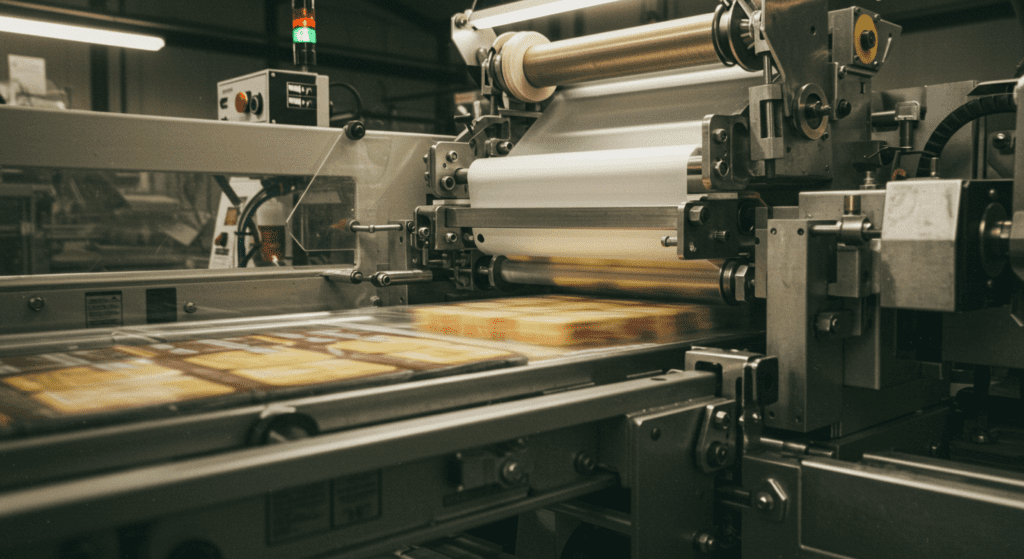
Horizontal Flow Wrappers (HFFS)
- Uneven/Incomplete Seals: Wrinkles or incomplete fin seals are usually due to improper sealing jaw temperature or pressure, or misaligned sealing jaws. Adjust the jaw alignment, and fine-tune the heat and pressure settings for the film material. Use an infrared thermometer to confirm actual jaw temperatures match settings.
- Film Wrinkling or Misfeed: Excess film wrinkles often come from wrong film tension or incorrect threading. Inspect the film path: ensure the film is centered on the unwind spindle and properly fed through the tensioners and dancer bars. Clean the film brake roller and verify that guide rollers spin freely.
- Product Misalignment: Products might enter the sealer off-center if infeed guides or conveyors are misadjusted. Check forming tubes and guide plates for damage or mis-set positions. Adjust guiding rails so each product enters squarely into the film tube.
- Excess Film Waste: High scrap rates often indicate an incorrect cutter timing or registration. Verify film registration sensors and adjust the film cutoff length so the film is not overused.
- Slow Throughput/Speed Issues: Production running below expected speed can be due to slippage or misalignment in the conveyor drive. Check belt tension/alignment and motor drive settings. Ensure the machine isn’t being operated at an abusive high speed that exceeds its capabilities.
- Control Errors: Modern wrappers display error codes for faults. Learn these codes and refer to the manual. Often they indicate mis-set parameters or sensor faults. Keep software/firmware updated and sensors clean.
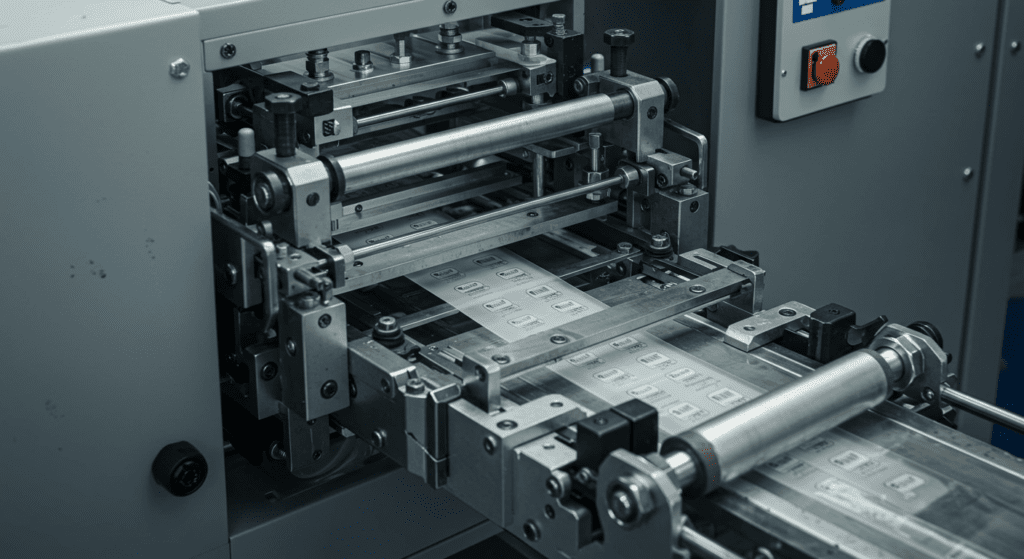
Blister Packaging Machines
- Sealing Defects: Blister packs not sealing (leaks or delamination) usually arise from incorrect heat, pressure or dwell time. Different films (PVC, PET, PP, PS) require specific temperatures. Use an IR thermometer and check pressure gauges to fine-tune settings. Too-low temperature or pressure yields incomplete seals; too-high can burn film.
- Film Feed/Transport Jams: Aluminum or plastic film may wrinkle or jam if film tension is off or guide wheels misaligned. Inspect the tension control: the film should not be too loose (causing folds) or too tight (causing tears). Verify all guide/drive wheels are in correct position. Remove any debris or stickiness. If a jam occurs, stop the machine, clear the material, then slowly restart with close monitoring.
- Molding (Forming) Problems: Blister cavities may come out distorted if the forming oven temperature or pressure is incorrect. Check that the forming heater reaches the correct temperature for the chosen film (overheating can collapse features, underheating leaves them shallow). Also ensure vacuum or air pressure during forming is sufficient to pull/press the softened film fully into the mold. If needed, incrementally adjust the oven temperature, increase forming pressure, or lengthen cooling time.
- Product Loading Errors: Missing or mis-placed products indicate an indexing or positioning fault. Confirm the feed system accurately delivers each tablet/capsule to the pick-up or drop area. Check that the positioning plates or molds are not worn or misaligned. Ensure the conveyor and feeder speeds are synchronized so the product has time to seat in the cavity.
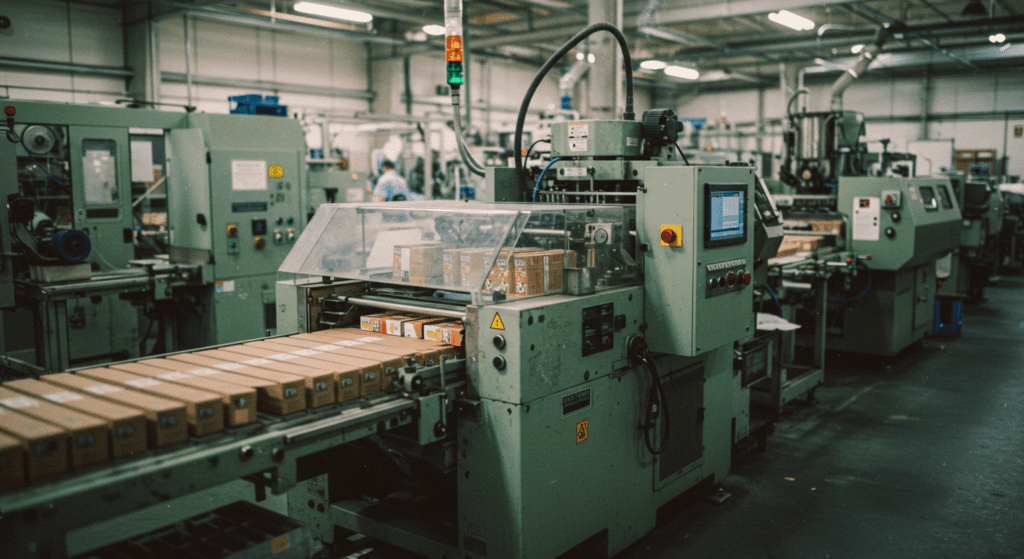
Cartoning Machines
- Box Jams: Carton blanks can jam in the erector if the material is too hard/soft or mis-sized. Use carton stock of proper thickness and finish as specified by the machine. Regularly clean and lubricate carton transport belts and vacuum ports. Ensure carton guides and mold plates are sized correctly for the box dimensions to prevent snags.
- Glue/Adhesive Issues: Poor or leaky glue causes cartons to open or packages to fail seals. Maintain the gluer: keep the glue temperature in range (not too low to clump glue, not too high to burn it). Use the right adhesive for the board stock and season, and clean glue nozzles/rollers frequently to prevent clogging or uneven application.
- Product Feeding Problems: Items failing to enter cartons often come from feeder misadjustment or blockage. Check that product feed conveyors are clear and that sensors detect products correctly. Adjust chutes or feeders to match product size/shape; ensure sensors are calibrated to the correct position so each product is triggered into the box at the right moment.
- Folding/Sealing Errors: Bad or crushed folds typically indicate mis-set folding guides or improper pressure. Adjust the side-fold and top-fold guides to the carton size, and set the fold pressure to neither crush (too high) nor under-fold (too low) the flaps. Use test runs to verify neat folds before production.
- Box Size Mismatch: Running the wrong carton size without retooling will jam the machine. Always adjust mold settings and machine parameters when box dimensions change; pre-run checks of box flatness and print may catch errors early.
- Automation/Electrical Faults: Sensors (photoeyes, limit switches) or PLC logic errors can halt the cartoner. Regularly calibrate or replace sensors to ensure they reliably detect cartons/products. Keep control software and wiring in good order – perform software updates and address any error codes promptly.
- Wear and Tear: Gears, belts, and bearings wear with use. Implement scheduled lubrication and inspections: replace worn parts before they fail (e.g. conveyors, carton grippers).
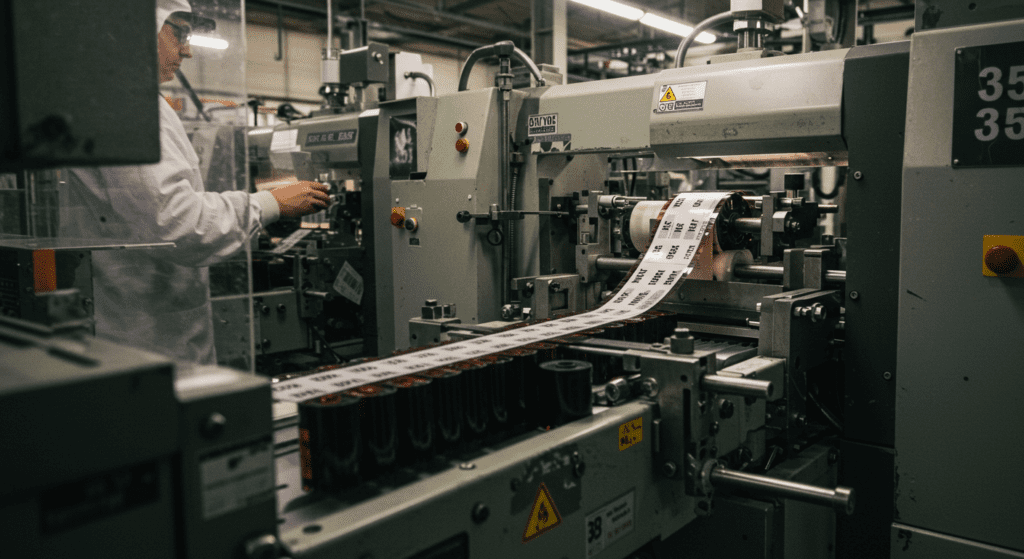
Labeling Machines
- Label Misalignment/Wrinkling: If labels apply crooked or wrinkled, the labeling head or sensors are likely mispositioned. Check and adjust the label head’s vertical/horizontal position to match the product. Also inspect label web tension – too high or low tension causes the label to shift or pucker.
- Label Path Jams: Labels can jam if there is debris or a torn label on the web path. Inspect the entire label path for obstructions. Worn drive rollers can lose traction and cause jams – replace any roller with damaged rubber or bearings.
- Inconsistent Application: Variations in label placement often come from incorrect speed or sensor misfires. Reduce labeler speed if it exceeds the model’s capacity. Calibrate the product detection and label sensors: even slight misalignment or dust on a sensor can skip labels or double-apply them.
- Adhesive Residue: Glue buildup on labeling heads or rollers will impede label adhesion. Clean these surfaces with manufacturer-approved solvents regularly. Stickiness can cause labels to stick prematurely or slip.
- Sensor/Feed Errors: Faulty readings often result from misaligned or improperly set sensors. Realign the photoeyes and ensure they are set to the correct sensitivity for the label stock. Shield sensors from external light and dust, and perform sensor “teaches” when changing label stock.
- Print/Imaging Issues: For labelers with printers, verify printer settings (resolution, media type) match the label material. Low or empty ink/ribbon will cause faint or missing prints. Replace consumables on schedule.
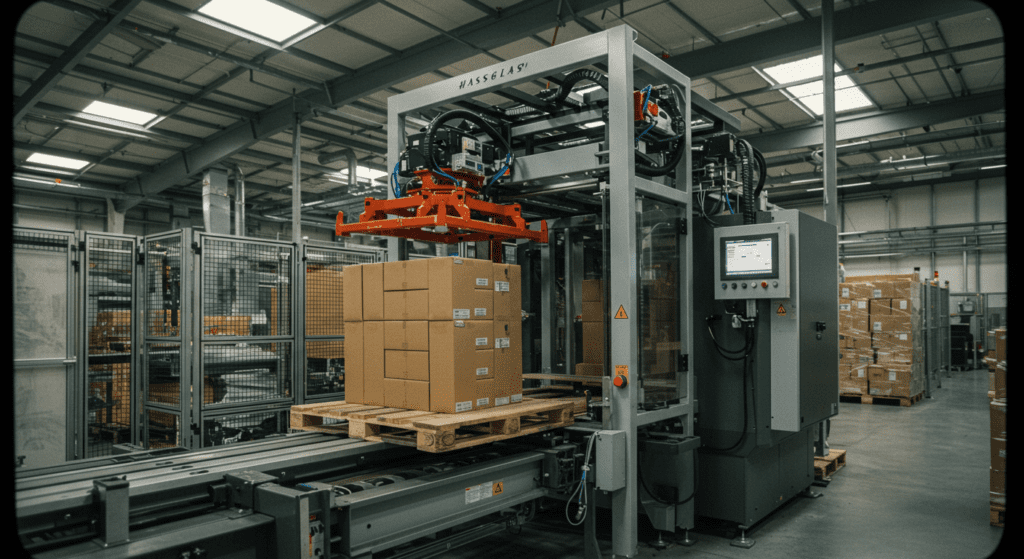
Palletizers (Case/Unit Stackers)
- Sensor Failures: Photo-eye sensors and vision systems are critical and often a weak link. Dirty or misaligned photo-eyes will misdetect pallets or cases. Clean sensor lenses daily and check alignment. Verify any laser or vision sensors are unobstructed.
- Mechanical Wear: The pallet dispenser chain, robot arm joints, and drive belts see heavy use. Wires, air lines, and vacuum tubing on end-of-arm tooling flex constantly and can break. Regularly inspect and replace worn hoses or cables. Lubricate gearboxes, pivot bearings and ejector pins as recommended. Listen for unusual noises or vibrations that indicate failing bearings or motors.
- Load Instability: Unstable stacks are often due to pallet or product issues rather than the machine. Use high-quality pallets that meet spec and consider adding layer wrapping to stabilize loads. Ensure load patterns (case orientation) are programmed correctly to avoid uneven weight distribution.
- Jams/Collisions: Pallet jams can occur if a case sticks or if a forklift accidentally hits the machine. Follow lockout/tagout and clear jams carefully. Use guards and safety-rated stops to detect unexpected loads. If a jam signal occurs on a specific conveyor, clear the jam at that station before restarting.
- Electrical/Control: PLC or HMI faults can interrupt operations. Keep the control panel clean of dust and perform software backups. If a servo or drive fault arises, check for overloading conditions or encoder errors.
Machine Type vs. Common Problems and Solutions
| Machine Type | Common Problems | Solutions/Preventive |
|---|---|---|
| VFFS (Vertical FFS) | Electrical (no power/reset), low air, seal jams, film mis-tracking | Check power supplies and safety circuits; verify air lines/pressure; calibrate temp/sensors; clean formers and rollers. |
| HFFS (Flow Wrapper) | Wrinkled/incomplete seals, film wrinkles, product misfeeds, machine errors | Adjust seal jaw temperature/pressure; ensure proper film tension/webbing; align guides; maintain belts; calibrate sensors; clean regularly. |
| Blister Packer | Seal leaks (heat/temp error), film jams, malformed blisters, product misses | Fine-tune oven temp and pressure (use IR gauge); align tensioners and guides; clean molds and vacuum lines; inspect feeders. |
| Cartoner | Carton jams or misfeeds, glue problems, fold errors, sensor faults | Use correct carton stock; adjust folding guides/pressure; maintain adhesive system (temp, nozzle clean); clear conveyor jams; calibrate sensors; replace worn parts on schedule. |
| Labeler | Label skew/wrinkles, jams, misplacement, sensor or printer errors | Align label head and sensors; set correct roll tension; clear path debris; replace worn rollers; calibrate detection sensors; verify printer settings and supplies; routine cleaning of adhesive. |
| Palletizer | Sensor faults (photoeyes), mechanical wear, unstable stacks | Clean/align photo-eyes and vision sensors; lubricate joints; inspect robot cables/vacuum tubes; use quality pallets and proper stacking patterns; perform annual robot/Pallet PM (fans, motors, belts). |



